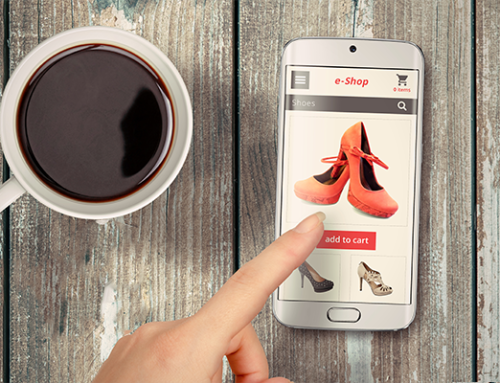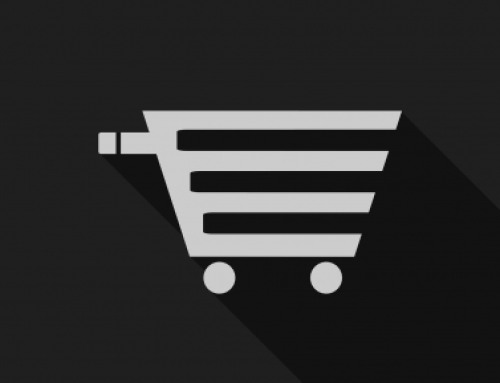Why B2B dealers depend on 3D visualizations.
To stay at the top of the B2B market, companies must offer potential customers a multimedia experience. This means that companies depend on a good mix of images, videos and virtual reality (VR) content.

By 2020, B2B e-commerce sales will exceed B2C sales and reach 6.6 trillion dollars. However, in recent years it has been observed that not all B2B merchants are making efforts to increase their share of the growing market. To maximize opportunities, companies should offer potential customers a multimedia experience. After all, buyers want all the background information they can use for major purchases. From images and videos to purchase reviews, potential customers search the Internet for background information before contacting a seller.
To really move forward, B2B sellers should use a 3D configurator to market personalized products and improve customer interaction.
To illustrate the increasing importance of 3D visualizations, we would like to present a German translation of an interview between the Digital Journal and Kris Goldhair, Strategic Account Director at KBMax. You can find the English original on the following page.
Question: How big is the B2B eCommerce turnover expected to become in the next few years?
B2B eCommerce sales are growing enormously. In 2018 the industry exceeded $1 trillion and we can expect this figure to be even higher as we approach 2019. KBMax’s corporate clients hope that eCommerce will account for 50% of their total market share in the near future. Since B2B products can be very expensive and highly specialized, it is unlikely that a B2B company will generate 100% of its sales through eCommerce, but a target of 50% is the cross-industry trend. For example, KBMax customer Tuff Shed now generates 10 percent of its sales from eCommerce and hopes to reach 50 percent in the next few years.
What next-generation strategies should companies pursue to win new customers?
Focus on the customer journey and the customer experience. If the sales plan is to put products on the company’s website, then it must ensure that this is done with usability in mind. B2B corporate websites are generally less user-friendly, so in practice there are more problems. To have a user experience that feels more B2C and presents products in a very visual and appealing way, without too much product information and data.
Traditionally, B2B companies have shied away from sharing product information until potential customers provide their contact information. But nowadays people want to explore products themselves and experience the product through something like visualization. This research phase is done before customers are ready to talk to a salesperson or give contact information. B2B brands need to adapt their sales processes to reflect changing customer preferences.
How important is it to develop an interactive sales experience for the customer?
Interactive sales can help to generate more leads and close more deals, especially for customized products that are not available in a store or showroom. Visualization is especially important for manufactured products, as it allows customers to see the final product and experience the customer-specific elements. However, the most important factor is transparency towards the customer through user-friendly access to product information.
How is the role of the salesperson changing in the digital age?
Customers no longer want to experience hardcore sales, but still want support throughout the entire sales process. Today’s salesperson tends to remain in the background, providing the right level of detail and ensuring that they are not too aggressive with traditional sales tactics. This approach ensures that customers have everything they need, while the salesperson remains more in the background. Marketing must also play a role in the sales process by providing the right and reliable information on the website. Today, sales is a cross-team task and more than ever requires coordination with marketing.
How can websites use 3D visualizations?
There are several possibilities. There are examples like Tuff Shed, where customers configure the entire product and see everything they will get. You can also use the visualization as a lead generation tool by taking a virtual tour of the product. With B2B products, it’s quite possible that someone might not feel comfortable buying a configured product for half a million Euros. But a virtual tour allows customers to get to know the product better and then move into a more traditional B2B distribution chain. This allows companies to use the tool to generate orders or leads directly. Both are good ways to get customers to understand the product better and provide a B2C-like experience.
How important are social media and eCommerce for B2B sales?
Facebook and Twitter are not very important for B2B. LinkedIn offers the greatest added value when companies are looking for B2B providers, they will contact their professional colleagues to see if the product is highly regarded in the professional community. B2B brands should focus on more content in the sense of thought leadership through LinkedIn to increase confidence in their product or service.
What strategies can be used for a customer-specific product that does not yet exist?
An individual product can mean different things. For some companies you can build something that has literally never been built before, but that is not the case for most companies. Because of the product rules built into CPQ software, the configurator can still allow this to happen and show what it will look like, what it will cost. Customers can use this as a basis for putting together their desired product.
In the manufacturing and engineering world, companies can create a unique product – something that has never been built before, but will not be able to use a configurator. Building a completely new product is still a good idea, as it could lead to a core offering, these requests should be addressed as part of the product development process.
3D configurators are becoming more and more important in the mass customization area as they give the customer the feeling that they have many options to build a customized product, but with the rules built into the configurator on the backend it is still treated as a standard product.
We hope that the interview provided you with some good insights into this topic. If you still have questions or suggestions, please leave a comment below.
Thank you very much for your visit.


